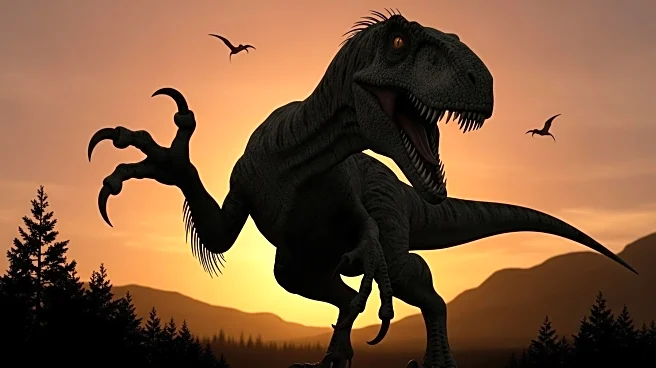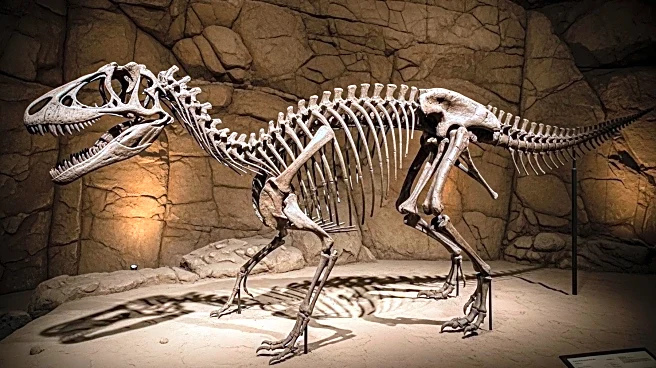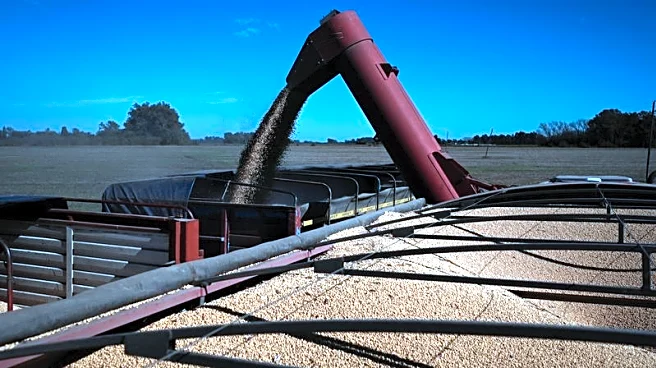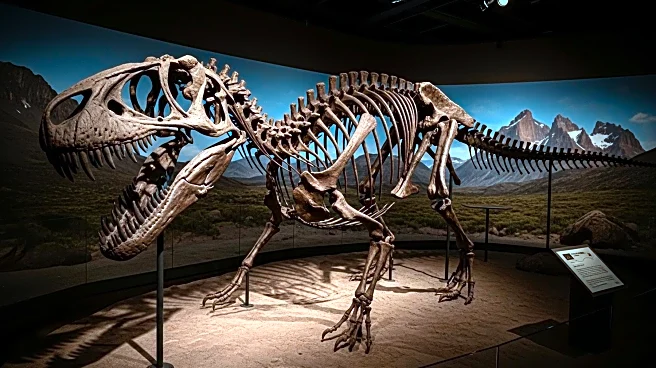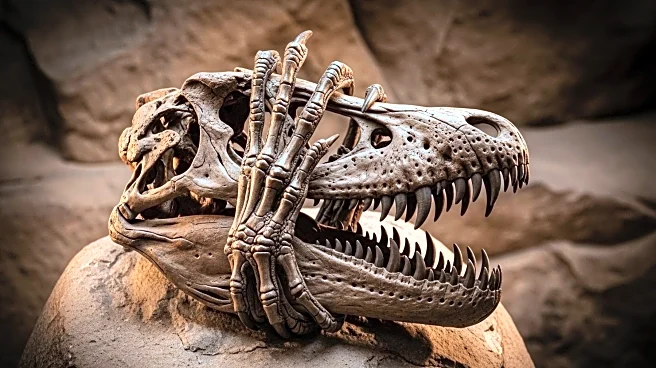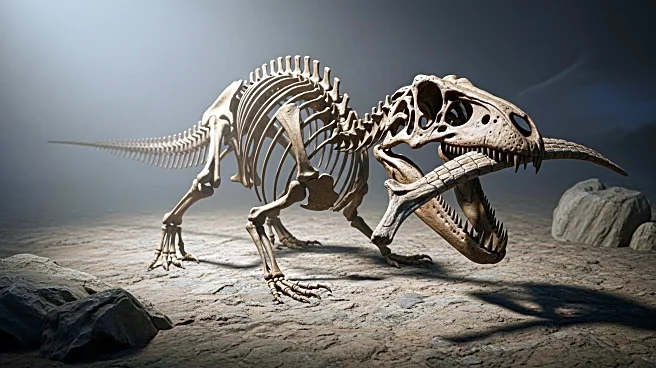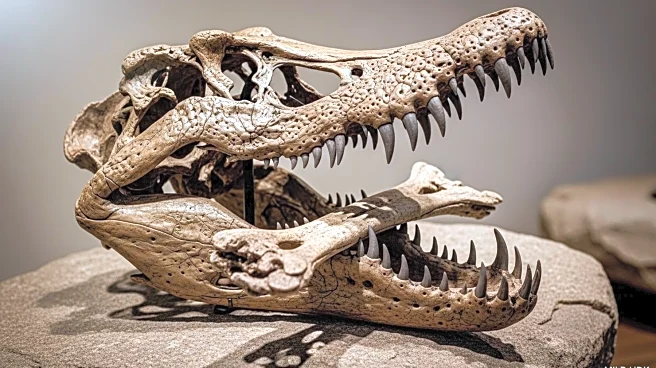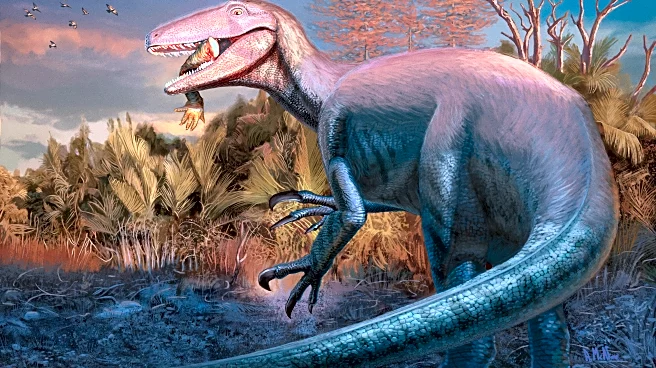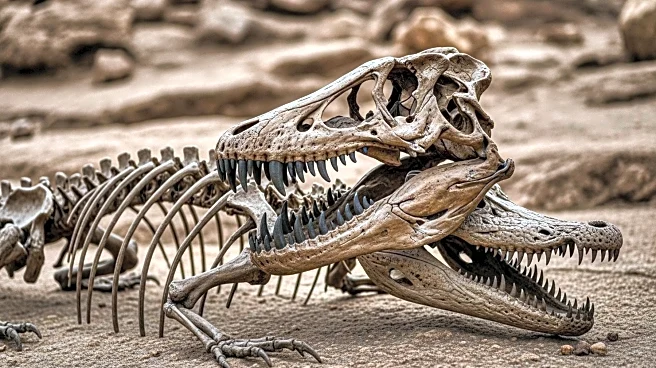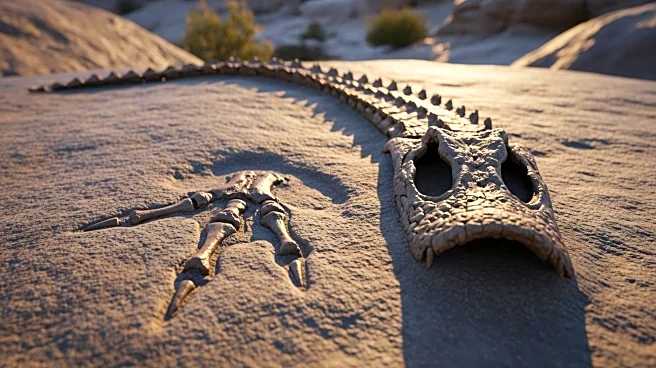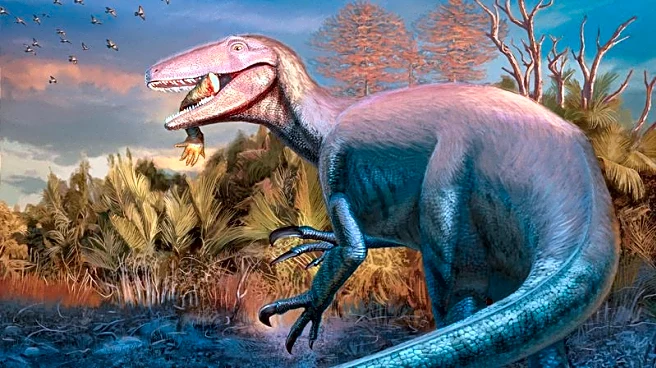What is the story about?
What's Happening?
A new species of megaraptor, Joaquinraptor casali, has been discovered in central Patagonia, Argentina. This carnivorous dinosaur, estimated to weigh over 2,200 pounds and measure 23 feet in length, was found with the leg of an ancient crocodile relative near its jaws, indicating its role as a top predator. The fossil, unearthed from the Lago Colhué Huapi Formation, includes a well-preserved skull, limbs, ribs, and vertebrae. Joaquinraptor casali lived during the final stages of the Cretaceous period, providing valuable insights into the megaraptor family and their ecological role.
Why It's Important?
The discovery of Joaquinraptor casali is crucial for understanding the predatory hierarchy of the Late Cretaceous period. As a formidable theropod, this dinosaur exemplifies the adaptations that allowed megaraptors to thrive as apex predators in South America. The find enriches the paleontological record by offering a more complete picture of megaraptor anatomy and behavior, contributing to the broader understanding of dinosaur evolution and extinction. It highlights the diversity of predatory strategies among dinosaurs, with Joaquinraptor casali showcasing powerful claws and swift movement.
What's Next?
Ongoing research will focus on the detailed analysis of Joaquinraptor casali's fossil remains to further understand its anatomy and ecological interactions. Scientists may investigate the sedimentary context of the fossil site to reconstruct the environmental conditions of the time. Comparative studies with other megaraptor fossils could refine the understanding of their evolutionary path and ecological roles. The discovery may lead to new expeditions aimed at uncovering additional specimens, enhancing knowledge of the Late Cretaceous ecosystem.
Beyond the Headlines
The discovery of Joaquinraptor casali prompts reflection on the ecological dynamics and predator-prey relationships during the Late Cretaceous period. The presence of a crocodile leg in its jaws suggests complex feeding strategies and interactions with other species. This find underscores the importance of paleontological research in understanding prehistoric life and the factors leading to the extinction of non-avian dinosaurs. Insights from such studies can inform current biodiversity and conservation efforts by providing historical context on species adaptation and survival.
AI Generated Content
Do you find this article useful?
